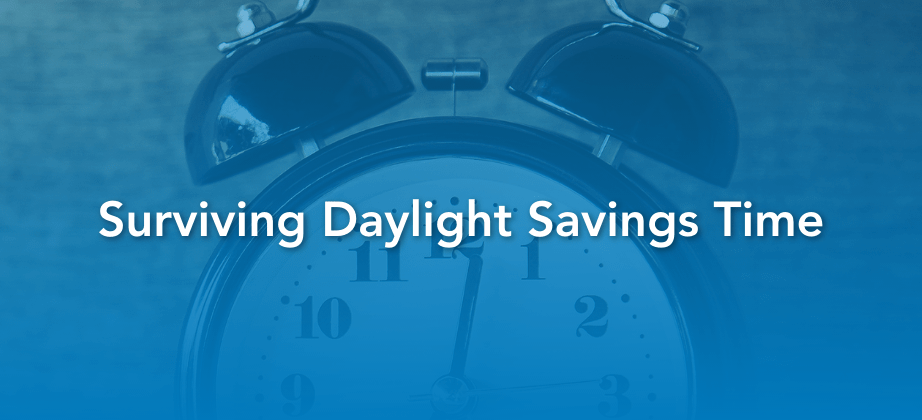Surviving Daylight Saving Time

The twice-a-year tradition is nearly upon us: Daylight Savings Time. This year, DST starts at 2:00a.m. on Sunday, March 13. The night before, set your clocks forward one hour.
Mornings will be darker, evenings will be brighter, and many people will be tired from disrupted sleep cycles. Here’s what you can look forward to, what to plan for, and how to smoothly transition after daylight savings without being too tired the next morning.
Benefits of the time change:
- More sunshine during the day
- More opportunities for outdoor activities
- A reminder that spring/summer are near
- You can come home from work with the sun still up
- Neighborhoods tend to be safer during times of the year with more sunlight
Cons of the time change:
- The dreaded “sleepy Monday” after losing an hour of sleep
- Disrupts your circadian rhythm
- Higher likelihood after time change of stress, heart attacks and car crashes from lack of sleep
- Mental fatigue/depression from poor quality sleep
- Difficulty getting out of bed/being motivated/staying focused
How to beat daylight savings time:
- Try going to sleep a little early 1-2 nights before so your body can adjust to the change
- If possible, plan ahead so you have less to do that Sunday and Monday.
- Avoid eating right before bed. Eating before bed can disrupt the quality of your sleep
- Avoid consuming caffeine 6 hours before bed
- Daylight savings time shifts sunlight an hour later in the day, so you may need to account for sunlight as you settle in to bed. Use an eye mask or blackout curtains to control the light in your room
- In the daytime, try to get outside or near a window to get some sunlight. Exposing yourself to sunlight for even just 15 minutes can help your body clock adjust to the new sunlight hours


